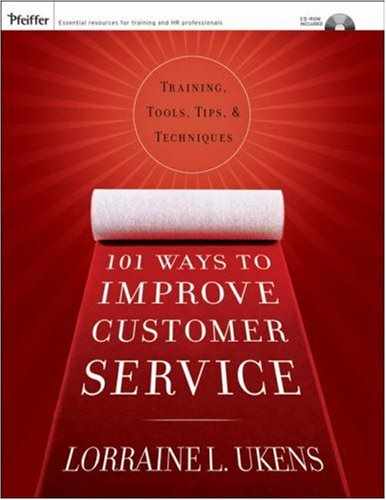Awareness of the personal view he or she has of self, other people, and the environment creates a certain perspective that affects how a service representative performs a job, interacts with customers, and reacts to situations. Because these individuals often carry the weight of how a customer might evaluate the entire organization, it is imperative that they stay attuned to their capabilities and attitudes.
The service representative plays a major role as liaison between the customer and the company. The results of these interactions directly influence the perception that the customer has of the product or service and the company itself. Perception is an individual’s personal understanding or view of things in the world, and perception is a large part of how expectations are formed. Service providers base their impressions of customers on their interactions with them, and customers base their judgments about the company on the attitude and actions of service representatives.
A perceptual set is a person’s tendency to see things in a certain way, do things a certain way, and stick to the familiar because it’s more comfortable than changing. Service providers need to be aware of their own perceptual sets as well as those of coworkers and customers. This will help them accept other points of view and overcome assumptions that influence decisions. Service providers’ mind-sets play another critical role in customer service in that they affect customer expectations. If employees can see things the way customers see them, they have a chance to make inroads in helping customers change their mind-sets.
Service providers must learn to see things from the customer’s perspective. In this way, they can understand the nature of customer expectations and then focus on what they can do to help make the service transaction a positive one. Interactions can be improved by understanding that people have different viewpoints, identifying and avoiding potential causes for misinterpretations, learning to separate fact from inference, and checking the accuracy of personal perceptions. A major step in acquiring this understanding occurs through accurate observation of people, things, and events.
Stereotypes are often applied to connect certain characteristics or abilities to people. These individual perceptions are based on personal opinions and value systems, and they can influence interactions with others, whether consciously or unconsciously. In today’s global marketplace, service providers encounter a high degree of customer diversity. Customers are unique in their beliefs and feelings, and circumstances affect the meaning of how situations are perceived. In order to respond to diverse demands, service providers have to get to know their own customers and their specific needs.
Service representatives also must handle the inherent frustrations of heavy customer contact and remain calm in demanding situations. Stress reduction strategies can help change either personal viewpoint or the work environment itself. Adding some relaxation and fun to the workday can help lighten spirits and reduce stress. Taking a lighthearted look at situations can put some of the most difficult problems into perspective.
Service representatives need to recognize their own skill sets and unique talents, as well as those of their teammates, so that these assets can be properly utilized to provide the highest quality service possible. Finally, it is imperative that service representatives communicate a professional image and build good rapport with both customers and associates. Individuals should be able to assert control of situations so that they can communicate their thoughts, feelings, and beliefs in a direct, honest, and appropriate way. These efforts will improve service representatives’ credibility and trustworthiness.
